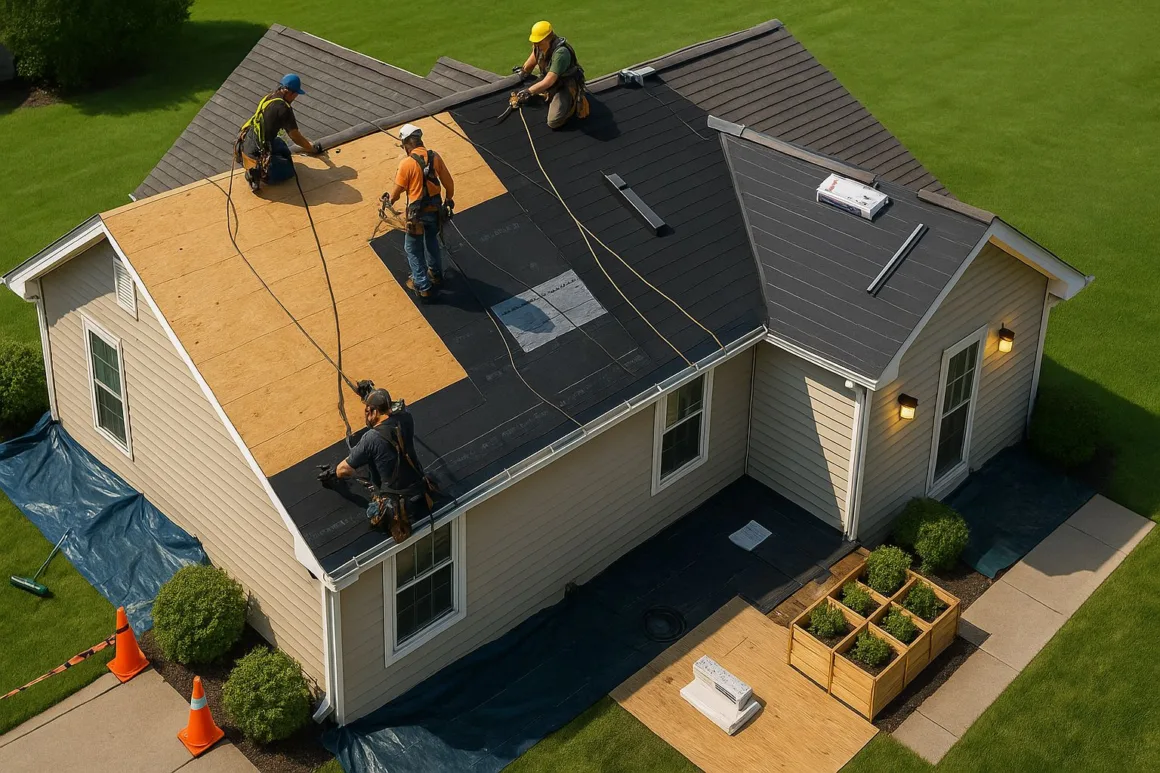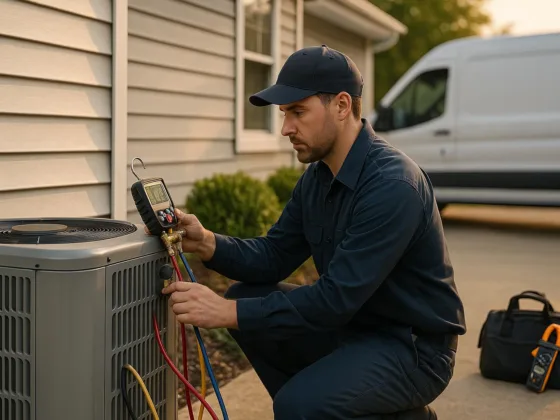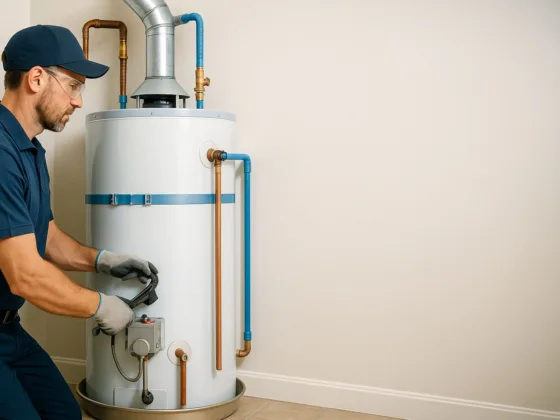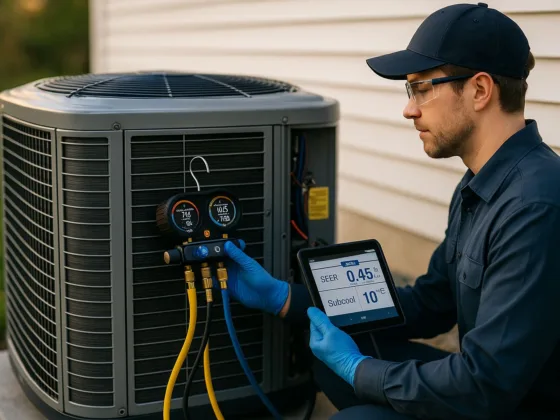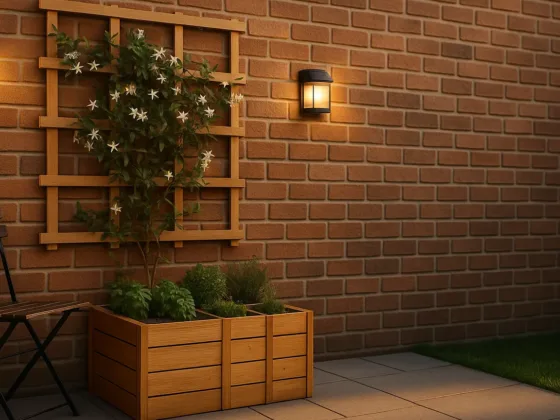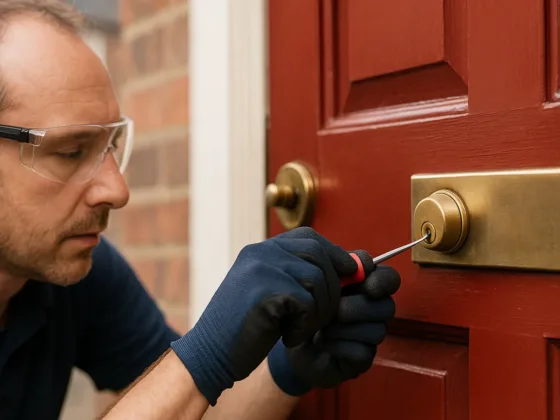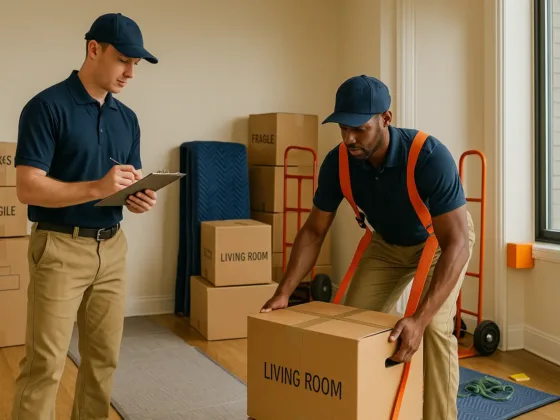Table of Contents Show
Need a local pro for a roof replacement? Use the checklist below to compare bids, code items (IRC R905/R806), and wind/hail ratings before you sign.
Signs You Need a Roof Replacement (Not Just a Patch)
Look for these common warning signs before you decide between repair and replacement:
- Age: Asphalt shingle roofs typically last 20–30 years (shorter in high-UV/hail zones). If you’re at or over this—plan replacement.
- Widespread shingle failure: curled/cupped edges, cracking, bald spots, or uneven surfaces.
- Chronic leaks & interior stains: repeated leaks = systemic failure, not a spot fix.
- Granule piles in gutters: accelerated shingle wear.
- Sagging roof deck: structural concern—treat as urgent.
Repair vs replace quick call: Repair = isolated damage (a few shingles/flashings) and the deck is sound. Replace = end-of-life roof, widespread loss, repeated leaks, soft/sagging deck, or major storm damage. For a deeper checklist of red flags, see signs you need a new roof.
Roof Replacement: Tear-Off vs. Overlay (Recover)
Under modern codes, “roof replacement” generally means removing existing coverings down to the deck. Limited “recover” (new over old) may be allowed only when the existing roof is dry, sound, has ≤1 layer, and other conditions are met; many jurisdictions still require tear-off. Always check local code and manufacturer warranty terms.
Here are reasons why the tear-off approach is often superior:
- Exposes hidden deck rot for proper repair.
- Reduces trapped heat/weight and improves long-term performance.
- Protects warranties in many cases by following manufacturer guidance.
Roof Replacement Case Study (Real-World Composite)
Home: 1,900 ft² suburban house in a hail-prone region; 25-year 3-tab asphalt roof showing bald spots, ceiling stains near a bath fan, and soft sheathing around a skylight.
- Inspections: Contractor A proposed an overlay at $13.2k. Contractor B flagged soft decking and recommended full tear-off at $18.1k with deck repairs.
- Specs chosen: Synthetic underlayment (more tear-resistant than felt), sealed valleys, new drip edge, ridge vent + new soffit vents to hit NFA (net free area) targets, UL 2218 Class 4 shingles (hail) and ASTM D7158 Class H rating (wind).
- Why tear-off: Expose/replace damaged sheathing, reset flashings, and keep manufacturer warranty clean; overlay would trap defects and add weight.
- Outcome (first season): No leaks through spring storms; attic temps dropped due to balanced ventilation; insurer applied a small impact-resistant roof discount (varies by state/policy).
Takeaway: The higher upfront cost for tear-off protected the deck, improved ventilation, and aligned with hail/wind risk—trading a cheaper short-term fix for a longer-life system.
Roofing Materials for Roof Replacement (2025): Lifespan, Ratings & Typical Costs
Use this quick snapshot to compare durability, risk ratings, and budget ranges across popular materials:
| Material | Typical Lifespan* | Wind/Hail Considerations | Energy Notes | Typical Installed Cost (2025) |
|---|---|---|---|---|
| Architectural Asphalt | 25–30 yrs | Choose ASTM D7158 Class G/H; hail-belt? UL 2218 Class 4 | “Cool-color” granules available | $6–$11/sq ft |
| Metal (standing seam) | 40–70 yrs | Excellent wind; hail varies by gauge | Highly reflective options | $16–$40+/sq ft |
| Tile (clay/concrete) | 50–100+ yrs | Heavy; excellent durability; wind clips may be required | High thermal mass | Premium / varies |
| Slate (natural) | 75–150 yrs | Very durable; heavy | Natural, long-life | $25–$30+/sq ft |
| Synthetic (composite) | 30–50 yrs | Many carry Class 4 hail ratings | Often lighter than natural materials | $15–$20/sq ft |
Compare options in our silo primers: best roofing shingles and metal roofing guide.
2025 Roof Replacement Costs (What to Budget)
National range: often $9.5k–$30k+, driven by size (squares), pitch, layers to remove, penetrations, and material. Per-sq-ft quick check: ~$6–$11/sq ft for architectural asphalt; budget lower (~$4–$6) only for 3-tab where it’s still available.
Pro Tip: Get 3 comparable bids with the same scope (tear-off, underlayment, vents, flashing, drip edge, ridge cap, disposal) instead of chasing the lowest number.
Want a quick estimate? See our roof cost calculator tips to double-check quotes.
Roof Replacement Code Must-Haves (Protect Performance & Warranty)
Before signing your contract, confirm these code-driven details to protect performance and warranties (IRC = International Residential Code):
- Underlayment: Follow IRC R905.1 and manufacturer tables. Add ice-barrier in cold/ice-dam zones; synthetics dominate for durability.
- Ventilation: Target 1:150 NFA (net free area)—or 1:300 with proper conditions—and balance intake (soffit) with exhaust (ridge/roof); see IRC R806.2.
- Flashings & drip edge: Replace at valleys, chimneys, side/end walls; drip edge is typically required. For line-item budgeting, review roof flashing costs.
Pro Tip: In hail or high-wind regions, step up to shingles with UL 2218 Class 4 (hail) and ASTM D7158 Class G/H (wind) and confirm this in the written bid—it can affect insurance and performance.
Roof Replacement: Insurance, Storms & Resilience
If your roof damage involves storms or insurance, prioritize these steps:
- Claims: Document damage (photos/video), call your insurer, meet the adjuster, and get a contractor’s itemized scope.
- FORTIFIED Roof: Consider the IBHS FORTIFIED Roof program (optional resilience standard) for upgrades like sealed roof deck and enhanced edge metal; discounts/incentives may apply in some regions.
Roof Replacement Process (New Roof Installation Step-by-Step)
Most professional replacements follow these stages from initial inspection to final sign-off:
- Inspection & scope (decking, layers, penetrations).
- Permits & planning (dumpster, access, landscape protection).
- Full tear-off to deck (repair/replace damaged sheathing).
- Underlayment & ice-barrier, flashing, ventilation upgrades.
- Primary roofing install (starter → field → ridge).
- Detailing & cleanup (magnets, gutters, attic check).
- Final inspection (meets code + manufacturer specs).
Choosing the Right Roof Replacement Contractor
When vetting roofers, use these checkpoints to compare quality—not just price:
- Verify license/insurance, demand a written scope, and ask for installs aligned with recognized best practices.
- Compare shingle wind/hail ratings, the ventilation plan, and warranty (materials and workmanship). For interviewing bidders, read how to choose a good roofer.
FAQs
Quick answers to the questions homeowners ask most about roof replacement:
Most asphalt shingle roof replacements take 1–3 days depending on size, pitch, layers to remove, and weather.
Only if code/manufacturer allow, the existing layer is flat and dry, and there’s ≤1 layer. Tear-off typically performs better and protects warranties.
Traditional roofs: generally No (25C). Solar roofing tiles/shingles may qualify under 25D; attic insulation may qualify separately. See IRS: Home Energy Tax Credits.
Plan 1:150 NFA (or 1:300 with proper conditions) with balanced intake vs exhaust.
Internal Links
Explore more roofing guides in our silo to deepen your research:
- Best roofing shingles
- Metal roofing guide
- Roof cost calculator tips
- Signs you need a new roof
- Roof flashing costs
- Roof repair process
- Flat roof repair guide
- Repair vs replace gutters
Roofing Terms Glossary (tap to expand)
- IRC
- International Residential Code—model code many localities adopt. This guide references R905 (roof coverings) and R806 (attic ventilation).
- UL 2218 (Class 1–4)
- Hail impact-resistance test for roofing. Class 4 is the highest rating.
- ASTM D7158 (Class D/G/H)
- Wind-uplift classification for asphalt shingles. Class H = highest wind rating in this standard.
- NFA
- Net Free Area of roof ventilation. Rules of thumb: 1:150 (intake+exhaust), or 1:300 with specific conditions, with intake/exhaust balanced.
- Underlayment
- Water-shedding layer over the deck (synthetic or felt) required by code/manufacturer.
- Ice Barrier
- Self-adhered membrane (“ice & water shield”) at eaves/valleys in cold or ice-dam regions.
- Drip Edge
- Metal flashing at eaves/rakes that protects edges and directs runoff—typically required.
- Ridge Vent
- Low-profile vent along the ridge that exhausts attic air; must be paired with adequate soffit intake.
Further reading from recognized authorities and standards bodies:
- International Residential Code – R905 (Roof coverings) | R806.2 (Attic ventilation)
- Insurance Institute for Business & Home Safety (IBHS) – FORTIFIED Roof
- IRS – Home Energy Tax Credits (25C & 25D)
Key Takeaways
- Replace when the roof is at end of life (20–30 years for asphalt), shows widespread failure, chronic leaks, or deck sagging.
- Tear-off beats overlay for most homes: it exposes deck issues, reduces weight/heat, and helps protect warranties.
- Match ratings to risk: look for UL 2218 Class 4 (hail) and ASTM D7158 Class G/H (wind) where applicable.
- Budget smart: typical asphalt projects land around $9.5k–$30k+; plan ~$6–$11/sq ft for architectural asphalt (common today), with 3-tab sometimes lower (~$4–$6) where available.
- Verify code items (IRC R905 underlayment, R806 ventilation, flashing/drip edge) and get 3 comparable bids with the same scope.
Author: Perla Irish — Home Improvement Editor at DreamlandsDesign.
Reviewed by: Mark S. Graham, Vice President, Technical Services (NRCA staff). Editorial technical review for general accuracy; no endorsement of products or contractors is implied.
